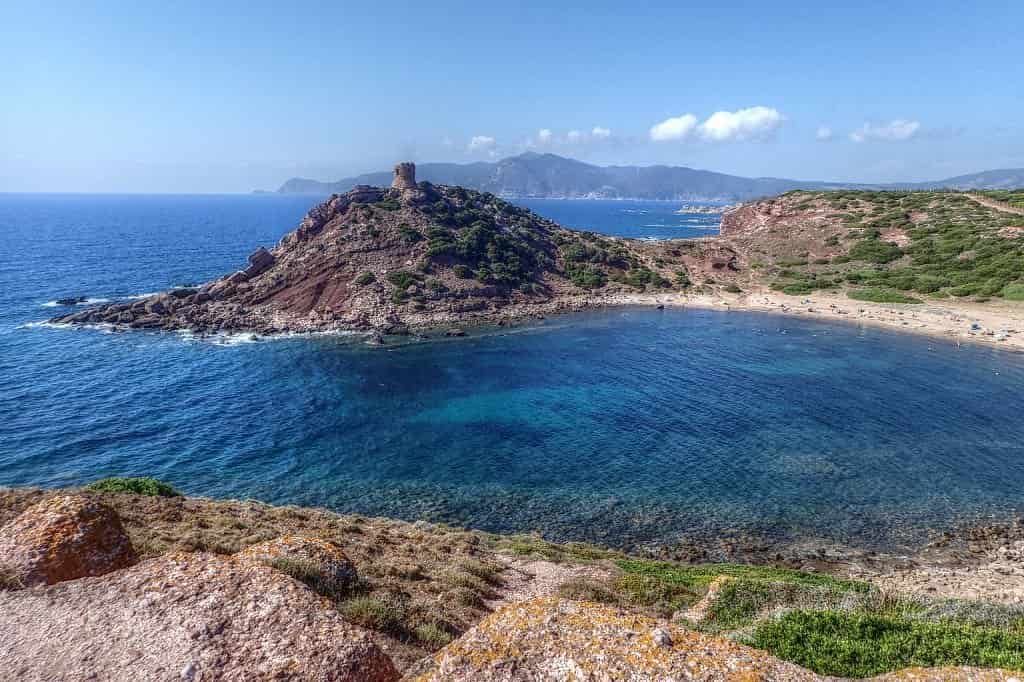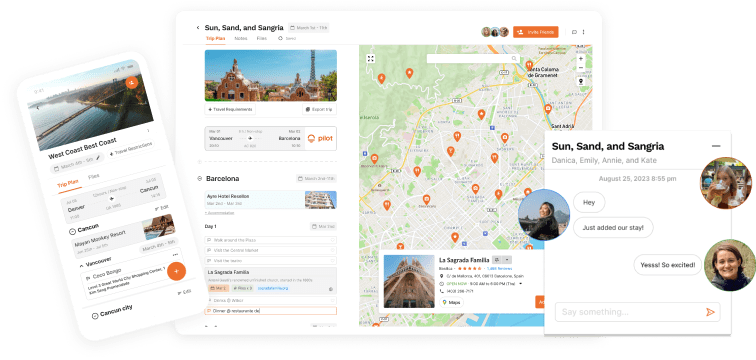Table of Contents
Picture yourself gliding over turquoise waters, with the warm sun on your face and the stunning Italian coastline as your backdrop. Whether a seasoned surfer or a beginner, you'll find a wave that suits your skill level in Italy.
There are various beach, point, and reef breaks, so you'll always have places to catch some waves. From the north to the south of the country, you'll discover an endless array of surf spots, each with unique charm and character.
Of course, a trip to Italy is not just about surfing. Italy is known for many things. It's renowned for its delicious food, fascinating culture, and friendly locals. After a long day of surfing, you can relax with a glass of wine, indulge in some fresh seafood, or enjoy the sights and sounds of Italy's historic towns and cities.
So, grab your board and sense of adventure, and prepare for an unforgettable surfing experience in Italy.
Surfing in Italy at a Glance
Pros
- Surfing in one of Europe's most stunning countries.
- Some quality breaks in Sardinia
Cons
- It relies on wind swell
- Never very big
- Lack of quality spots

When is the Best Time for Surfing in Italy?
The best time for surfing in Italy largely depends on the region you plan to surf in and your preferred surfing conditions. Italy has a long coastline with varying weather patterns, and each area experiences its own surf season. Here are the best times to surf in some of Italy's popular regions:
- Liguria, Lazio, and Tuscany: This area's surfing season is from September to April, with the best waves appearing in November and December.
- Sardinia and Sicily: Surf up on the islands from October to April. The best waves are yours to catch in January and February.
It's worth noting that the water temperature in Italy can vary depending on the season and region, so it's essential to wear the appropriate wetsuit. The water temperature typically ranges from 12°C to 23°C.
Overall, the best time to surf in Italy is during the fall and winter, when the waves are at their best, and the crowds are smaller. However, with the right gear, you can surf in Italy year-round and enjoy the country's stunning coastline and cultural attractions.
What Gear is Needed for Surfing in Italy?
When surfing in Italy, you'll need some essential gear to ensure a safe and enjoyable time on the water. Here's a list of the basic equipment you'll need:
- Surfboard: This is, of course, the most crucial piece of equipment you'll need. Bring your surfboard, or rent one from a surf shop near your chosen surf spot.
- Wetsuit: The water in Italy can be chilly, so a wetsuit is essential to keep you warm and protected. The thickness of the wetsuit you choose will depend on the season and water temperature. Still, typically, a 3/2mm or 4/3mm wetsuit will do the trick.
- Leash: A leash is a must-have safety accessory for any surfer. You don't want to lose your board!
- Wax: You'll need to apply wax to the top of your surfboard to create traction and make it easier for you to stay on your board.
- Rash guard: A rash guard can help prevent skin irritation caused by the wax on the surfboard and the friction of the wetsuit.
- Surfboard bag: If you're traveling with your surfboard, you'll need a bag to protect it during transport.
Overall, bringing gear that fits well and is appropriate for your surfing conditions is crucial. Bringing more equipment than you think you'll need is always a good idea so you're prepared for any possible situation.

Top 10 Surfing Spots in Italy
If you plan a surfing trip to Italy, you're in for a treat. The country has a beautiful coastline with plenty of excellent spots for surfers of all levels. Here are the top 10 surfing places in Italy:
10. Salento, Puglia
This southern region of Italy offers some great surfing options, with well-suited waves for beginners. One of the most popular spots in Salento is Porto Cesareo. When you are done with the waves, why not enjoy sampling some of Italy's finest wines on a wine tour through the vineyards of Salento?

9. Sperlonga, Lazio
Sperlonga is a charming seaside town located south of Rome. The area is known for its consistent waves, which are best for intermediate and advanced surfers. If the surf is flat, there are many other fun activities in Sperlonga, such as snorkeling trips and tours to the Blue Cave.
8. Viareggio, Tuscany
Viareggio is a bustling coastal town in Tuscany that offers a range of surf spots for surfers of all levels. The area is known for its gentle waves and sandy bottom, making it an excellent location for beginners. Why not enjoy dinner at a local's house after a day of surfing?

7. Sabaudia, Lazio
Sabaudia is a town located south of Rome known for its beautiful, long, sandy beach and consistent waves. The waves are well-suited for beginners, making it a fantastic place to learn how to surf.

6. Capo Mannu, Sardinia
Capo Mannu is a stunning surf spot on Sardinia's western coast. The area is known for its challenging waves, best suited for intermediate and advanced surfers.
5. Varazze, Liguria
Varazze is a town in northern Italy known for its consistent waves and rocky bottom. The waves are well-suited for intermediate and advanced surfers.

4. Marina di Pisa, Tuscany
Marina di Pisa is a great spot for beginners, with gentle waves and a sandy bottom. The area is also known for its beautiful scenery and charming town. Swap your surfboard for a bike when you are done with the waves, and explore Pisa on a fun bike tour.

3. Santa Marinella, Lazio
Santa Marinella is a town located north of Rome known for its consistent waves and beautiful scenery. The area is best suited for intermediate and advanced surfers.

2. Mondello, Sicily
Mondello is a stunning surf spot located on the northern coast of Sicily. The area has spectacular, crystal-clear waters and consistent waves and is well-suited for surfers of all levels.
1. Porto Ferro, Sardinia
Porto Ferro is the top surfing spot in Italy, offering challenging waves best suited for advanced surfers. The area is located on the northwestern coast of Sardinia and boasts stunning scenery and crystal-clear waters. To make the most of your visit to Porto Ferro, explore the area on an e-bike tour with a local when you aren't in the sea.
No matter your skill level, a surf spot in Italy is perfect for you. You can't go wrong in one of the most beautiful countries in the world.

Safety Tips for Surfing in Italy
Of course, safety should always be a top priority when surfing in Italy or anywhere else in the world. Here are some safety tips to keep in mind:
- Check the weather conditions: Before you hit the waves, check the weather forecast and surf report. That way, you'll know what to expect and be able to determine if the conditions are safe for surfing.
- Know your limits: Knowing your skill level and choosing a surf spot appropriate for your abilities is important. Don't try to tackle too advanced waves for you, as this can lead to injury.
- Wear the right gear: Be sure to wear a wetsuit appropriate for the water temperature, and use a leash and surfboard in good condition. You should also wear a rash guard and sunscreen to protect your skin.
- Respect the locals: If you're surfing in a new area, respecting the local surfers and their culture is essential. Follow any rules or regulations that are in place, and be mindful of the other surfers in the water.
- Be aware of your surroundings: Watch out for other surfers, swimmers, or any potential hazards in the water. Stay alert, and avoid distractions, like your phone or music, while surfing.
- Keep an eye out for rip currents: Rip currents are a common danger for surfers in Italy. If you get caught in a rip current, stay calm, and swim parallel to the shore until you're out of the current.
- Know when to call it quits: If you're tired or uncomfortable in the water, it's important to know when to call it a day. Please don't push yourself too hard, as it can lead to injury or fatigue.
By following these safety tips, you can have an enjoyable surfing experience in Italy while staying safe and avoiding potential hazards.

Surf's Up!
Now that you know all the best spots to surf in Italy, all that's left to do is book your trip. You've got everything you need, so it's time to start crafting the ideal travel experience for you, your family, and your friends.











![Paris Neighborhoods Guide [2024]: Areas to Visit & Avoid!](https://assets-global.website-files.com/63d1baf79ce0eb802868785b/65b947376eff1a3e72606d03_Paris%20Neighborhoods%20Guide.jpg)
![Camping in Italy: My 5 Top Favorite Campsites in Italy! [2024]](https://assets-global.website-files.com/63d1baf79ce0eb802868785b/640efadbd7f0587204d8f1b7_italy-camping.jpg)



